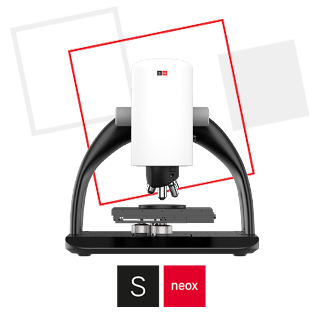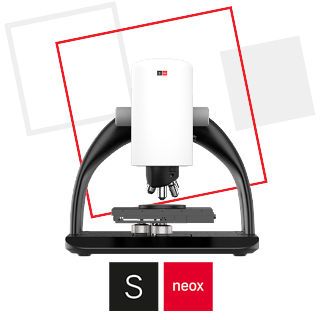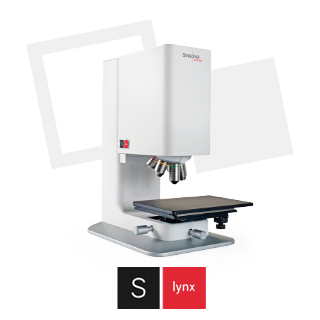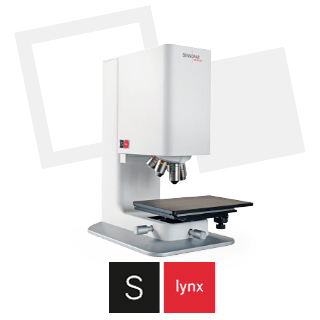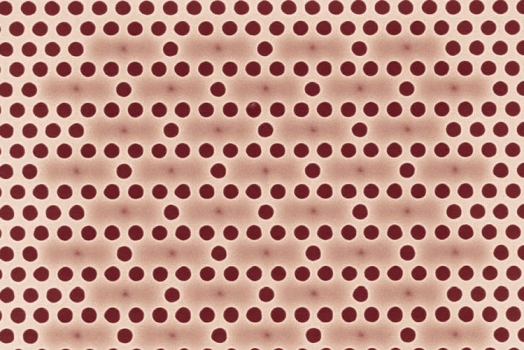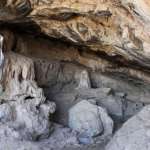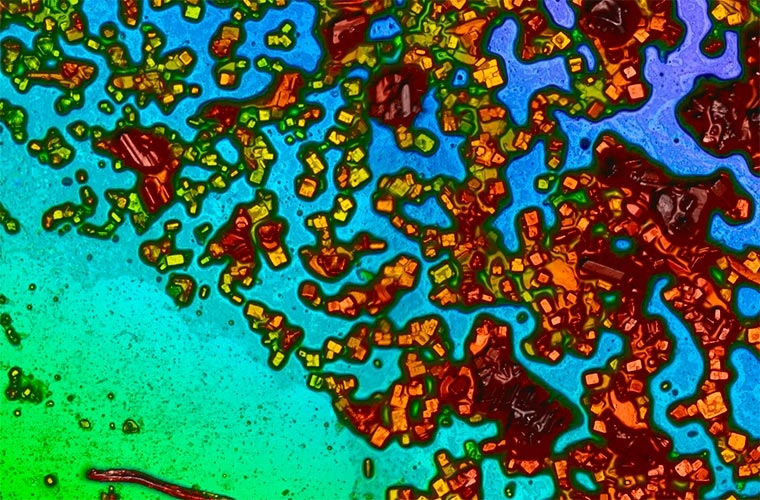
The effect of salt deposition on the performance of floating PVs
The Institute for Sustainable Energy (ISE) at the University of Malta is dedicated to the research of materials for solar conversion systems, methods for harvesting alternative energy and strategies for improving energy efficiency in urban environments. The newly built Solar Research Laboratories at ISE focus on the development of novel materials and thin films for photovoltaic applications. A part of this portfolio encompasses the investigation of the effects of salt drying on floating photovoltaic installations.
The Confocal technique has been used for
measuring the thickness and roughness of glass microscope slides, coated with salt.
Floating photovoltaic installations are a new concept combining land-based PV technology with novel floating systems. A number of floating PV installations have been implemented at a global level on various types of fresh water bodies including lakes, as well as irrigation and agricultural ponds.
For small islands like Malta, surrounded by saline territorial waters, one must also take into account the potential effect of salt deposition on the performance of floating solar PV systems when considering offshore installations. To extract the full potential of such a solar energy system, efficiency and performance should be at the highest possible levels, thus the number of factors that can affect these two measures should be examined and taken into consideration.
Dust accumulation on PV panels is widely known to significantly reduce performance; the effect of salt, on the other hand, has not been investigated. Since salt is not as opaque as dust, it is not clear how much it would shade PVs or to what extent it would accumulate after repeated panel wetting.
A sequence of wetting tests with solutions of various salt concentrations are being carried out in conjunction with opacity testing and light transmission testing to investigate the performance of PVs when exposed to a marine environment. White light optical profilometry in conjunction with microscopy is used to obtain the thickness measurements of the deposited salt layer in order to measure how long panels can be exposed to salt solutions with no adverse effects.
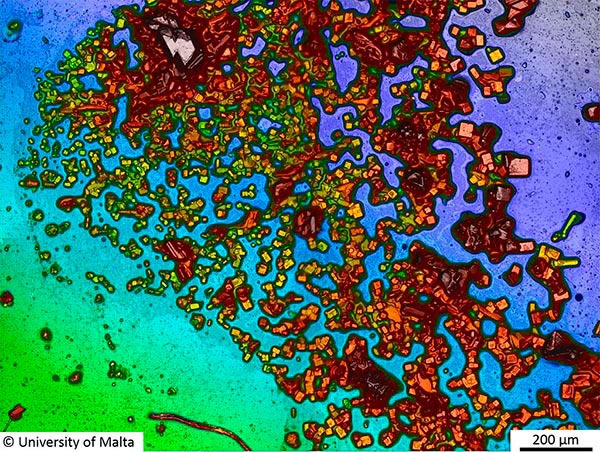
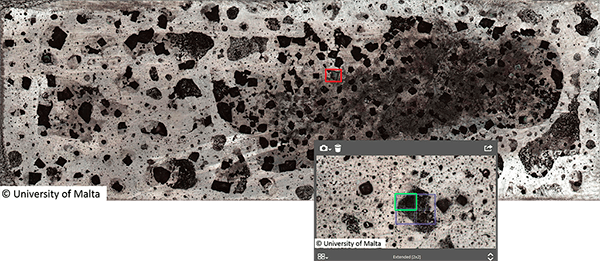
The test samples consist of glass microscope slides (26×76 mm) coated with salt in tandem with the panel wetting experiments. The characteristics of the deposited salt were investigated using confocal profilometry due to the high variability in surface features across samples.
An overview of the samples was first obtained using the 2.5X magnification brightfield objective in order to get an idea of the salient features. The crystal features of areas of interest were then captured using a 20X magnification objective in brightfield mode.
The three dimensional profiles were then processed in order to obtain information such as crystal height (and an approximation of thickness) as well as salient features.
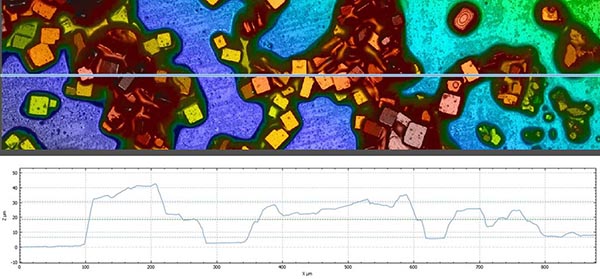
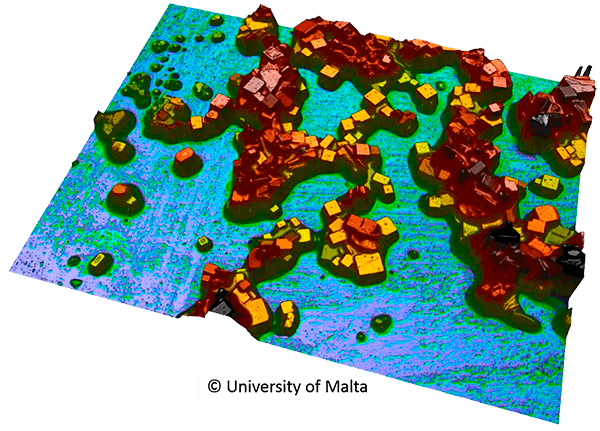
Post-processing features integrated into the software were vital for accurate measurement providing flattening algorithms and options to restore missing data points as necessary.
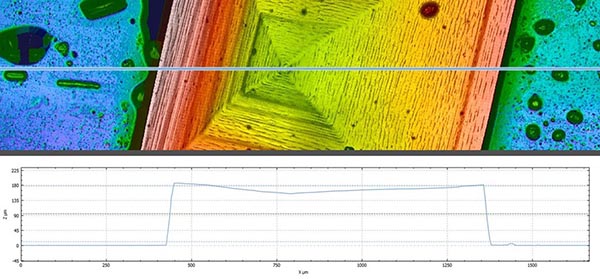
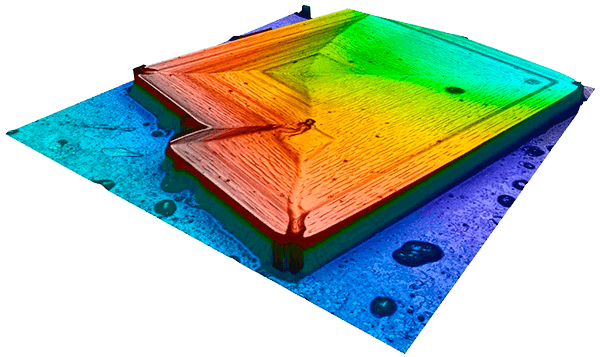
By using the S neox 3D optical profiler from Sensofar it is possible to measure glass microscope slides coated with salt. The 2.5X brightfield objective is used to acquire an enlarged overview of the sample and locate the areas of interest before taking the measurement.
The Confocal technique (20X brightfield objective) has been used for measuring the thickness and roughness of these parts successfully, acquiring high resolution topographies with enough reliability to record conclusions about thicknesses, critical dimensions and the distribution of particles on the surface. In some cases, extended measurements have been necessary to measure larger areas.









